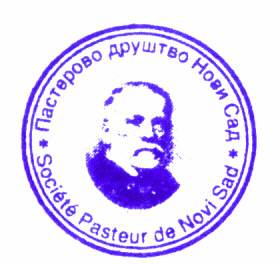md-medicaldata
Main menu:
- Naslovna/Home
- Arhiva/Archive
- Godina 2024, Broj 1
- Godina 2023, Broj 3
- Godina 2023, Broj 1-2
- Godina 2022, Broj 3
- Godina 2022, Broj 1-2
- Godina 2021, Broj 3-4
- Godina 2021, Broj 2
- Godina 2021, Broj 1
- Godina 2020, Broj 4
- Godina 2020, Broj 3
- Godina 2020, Broj 2
- Godina 2020, Broj 1
- Godina 2019, Broj 3
- Godina 2019, Broj 2
- Godina 2019, Broj 1
- Godina 2018, Broj 4
- Godina 2018, Broj 3
- Godina 2018, Broj 2
- Godina 2018, Broj 1
- Godina 2017, Broj 4
- Godina 2017, Broj 3
- Godina 2017, Broj 2
- Godina 2017, Broj 1
- Godina 2016, Broj 4
- Godina 2016, Broj 3
- Godina 2016, Broj 2
- Godina 2016, Broj 1
- Godina 2015, Broj 4
- Godina 2015, Broj 3
- Godina 2015, Broj 2
- Godina 2015, Broj 1
- Godina 2014, Broj 4
- Godina 2014, Broj 3
- Godina 2014, Broj 2
- Godina 2014, Broj 1
- Godina 2013, Broj 4
- Godina 2013, Broj 3
- Godina 2013, Broj 2
- Godina 2013, Broj 1
- Godina 2012, Broj 4
- Godina 2012, Broj 3
- Godina 2012, Broj 2
- Godina 2012, Broj 1
- Godina 2011, Broj 4
- Godina 2011, Broj 3
- Godina 2011, Broj 2
- Godina 2011, Broj 1
- Godina 2010, Broj 4
- Godina 2010, Broj 3
- Godina 2010, Broj 2
- Godina 2010, Broj 1
- Godina 2009, Broj 4
- Godina 2009, Broj 3
- Godina 2009, Broj 2
- Godina 2009, Broj 1
- Supplement
- Galerija/Gallery
- Dešavanja/Events
- Uputstva/Instructions
- Redakcija/Redaction
- Izdavač/Publisher
- Pretplata /Subscriptions
- Saradnja/Cooperation
- Vesti/News
- Kontakt/Contact
 Pasterovo društvo
Pasterovo društvo
- Disclosure of Potential Conflicts of Interest
- WorldMedical Association Declaration of Helsinki Ethical Principles for Medical Research Involving Human Subjects
- Committee on publication Ethics
CIP - Каталогизација у публикацији
Народна библиотека Србије, Београд
61
MD : Medical Data : medicinska revija = medical review / glavni i odgovorni urednik Dušan Lalošević. - Vol. 1, no. 1 (2009)- . - Zemun : Udruženje za kulturu povezivanja Most Art Jugoslavija ; Novi Sad : Pasterovo društvo, 2009- (Beograd : Scripta Internacional). - 30 cm
Dostupno i na: http://www.md-medicaldata.com. - Tri puta godišnje.
ISSN 1821-1585 = MD. Medical Data
COBISS.SR-ID 158558988
MORFOLOŠKI TIPOVI PINEALNE ŽLEZDE
MORPHOLOGICAL TYPES OF PINEAL GLAND
Authors
Valerija Munteanu1, Milan Popović2, Radosav Radosavkić3, Ivan Čapo2, Dušan Lalošević2
1 Klinički centar Vojvodine, Klinika za radiologiju, Novi Sad
2 Univerzitet u Novom Sadu, Medicinski fakultet Katedra za histologiju i embriologiju,
3 Univerzitet u Novom Sadu, Medicinski fakultet, Katedra za sudsku medicinu.
• Rad je primljen 14.12.2016. / Prihvaćen 27.12.2016.
Correspondence to:
Dr Valerija Munteanu
Klinika za radiologiju, Klinički centar Vojvodine, Novi Sad
Hajduk Veljkova 1-3, 21000 Novi Sad
e-mail: valerija.munteanu@engel.rs
Abstract
Introduction: The pineal gland so called because of its resemblance to a pine cone. It has also been said that its shape could be round or almond like.
Aim: We tried to evaluate anatomical types of pineal gland on the cadaveric material of different ageing.
Material and Methods: The study example included 38 pineal glands from persons not younger than 18. After fixation in 10% formalin solution (pH 7.4%) diameters of glands were measured with milimetric paper (AP-anteroposterior, LL-laterolateral, CC-craniocaudal), their ratios were calculated and ratios between the shortest and the other two were tested. Diference 100% greater than the shortest diameter was taken as significant. On this basis types were recognized and modeled by means of the average value of the longest, the second and the shortest diameter with Scetchup 2014.
Results: Four types of ratio between the shortest and the other two diameters were recognized: Type 1.-round-the shortest diameter is at least 50% or more of the value of the longest diameter-12 glands or 32%. Type 2.-intermediate type-the longest diameter is at least as two times longer than the shortest diameter-10 glands, 26%. Type 3.-almond-like-the shortest diameter is at least two times shorter than the other two diameters-15 glands, 39.4%. Type 4.-ribbon-like-two diameters are at least two times shorter than the longest-1 gland, 2.6%
Conclusion: According to the ratio of diameters, four anatomical types were recognized: round type (32%), intermediate type (26%), almond-like type (39.4%) and ribbon-like type (2.6%).
Key words
Pineal gland, pineal gland diameters, anatomical types
References
- Reiter RJ. Pineal gland. In: Becker KL, ed. Principles and practice of endocrinology and metabolism. Lippincott Williams & Wilkins; 2001.
- Lopez-Munoz F, Marin F, Alamo C. The historical background of the pineal gland: From a spiritual valve to the seat of the soul. Rev Neurol 2010; 50(1):50-7.
- 3.Glavaški M. Morfološke odlike pinealne žlezde u pojedinim hroničnim oboljenjima, Magistarski rad, Novi Sad, 1987.
- Sumida M, Barkovich AJ, Newton H. Development of the pineal gland: Measurement with MR. Am J Neuroradiology1996;17:223-236.
- Marinković R, Polzović A, Gudović R. Anatomija centralnog nervnog sistema. Medicinski fakultet,Univerzitet u Novom Sadu,1997.
- Golan J, Torres K, Staskiewiez G, Opielak G, Macijewski R. Morphometric parameters of the human pineal gland in relation to body weight and height. Folia Morphol 2002; 61(2):111-13.
- Ivanov SV. Age dependent morphology of human pineal gland: supravital study. Adv Gerontol 2007; 20(2):60-5.
- Sener RN. The pineal gland: A comparative MR imaging study in children and adults with respect to normal anatomical variations and pineal cyst. Pediatric Radilogy 1995; 25:245-248.
- Al-Holou WN, Garton HJL, Muraszko KM. Prevalence of pineal cysts in children and young adults. J Neurosurg Pediatr 2009; 4(3):230-6.
- Pu Y. High prevalence of pineal cysts in healthy adults demonstrated by high-resolution noncontrast brain MR imaging. Am J Neuroradiology 2007,28:1706-1709.
- Pastel DA, Mamourian AC, Duhaime AC. Internal structure in pineal cysts on high-resolution magnetic resonance imaging: Not a sign of malignancy. J Neurosurg Pediatr 2009; 4:81-4.
- Sun B et al. The pineal volume: A three-dimensional volumetric study in healthy young adults using 3.0 T MR data. International Journal of Developmental Neuroscience 2009,27:655-660.
UDK: 615.015-053.2
613.25-053.2
COBISS.SR-ID 226160396
 Medicinski fakultet
Medicinski fakultet